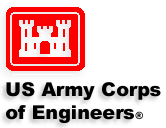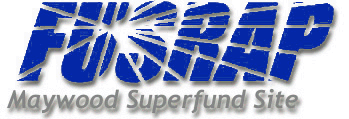

 |
 |
| Fact Sheet | CERCLA/Superfund | August 1998 |
| Return to list of Fact Sheets | home |
It is important to note that, unlike other environmental laws, CERCLA is a response and reporting act rather than an extensive regulatory act. However, CERCLA responsibilities do overlap with the Resource Conservation and Recovery Act (RCRA), the Clean Water Act, the Clean Air Act, and the Safe Drinking Water Act.
CERCLA has two elements: response actions and the Superfund Amendments and Reauthorization Act (SARA), which includes the National Oil and Hazardous Substances Pollution Contingency Plan (NCP) and the Community Right-to-Know Act. The National Contingency Plan (1987) detailed the specific steps involved in cleanup activities, but after the passage of SARA, it also set applicable or relevant and appropriate requirements for remedial action. The National Contingency Plan revision also requires the Environmental Protection Agency to maintain the National Priorities List, a list of the nation’ s most environmentally contaminated sites.
CERCLA and RCRA share authority with respect to underground storage tanks containing petroleum products and hazardous substances. Guidelines for these tanks are contained in Subtitle I of the 1984 Hazardous and Solid Waste Amendments to RCRA, but the types of waste
regulated are outlined by CERCLA.
In many cases, the United States Environmental Protection Agency (USEPA) attempts to identify the party(s) responsible for the contamination before taking any response actions itself.
Responsible parties can be any of the following: past and present site owners; generators of hazardous substances found at the site; or transporters of hazardous substance to the site. If these parties are able and willing to undertake the response task, the USEPA either negotiates a legal agreement with them or unilaterally orders them to do so. Should they be unable due to bankruptcy, or refuse to comply with the order altogether, the USEPA can undertake the response actions itself.
ARARs determine the technical standards for cleanup activities at a CERCLA site. The applicable requirements are federal or state environmental or public health laws and regulations or cleanup standards specific to a hazardous substance, pollutant, contaminant, remedial action, location, or other circumstance at a CERCLA site. If a requirement is not directly applicable, it may still be relevant and appropriate. Those requirements may address problems or situations
sufficiently similar to those encountered at the CERCLA site that their use may be well-suited to the particular site. A relevant requirement, however, may or may not be considered appropriate. Another element contained in SARA defined more explicitly the role of states in the process.
Emergency release notice is only required by the act if the release is of a USEPA-listed substance extending beyond the facility’ s boundaries. The Right-to-Know Act also includes a system of administrative, civil, and criminal penalties to enforce notification requirements. USEPA may order governments and commercial facilities into compliance. In addition, both USEPA and private citizens may bring a civil action against them and request that a court impose monetary
penalties for violations or the USEPA may seek criminal sanctions.
Back to the top of the page
Return to list of Fact Sheets